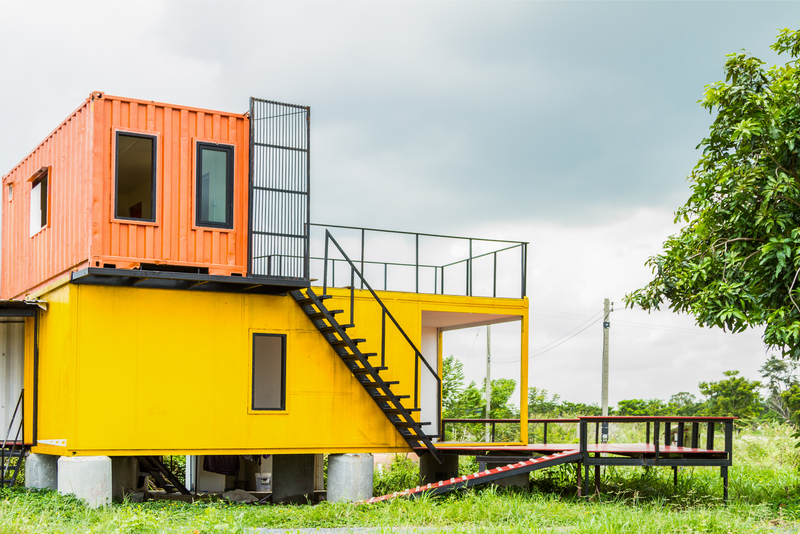Turn Your Unused Clothing into a Recycling Success Story
Have you ever opened your closet and wondered what to do with those piles of unused clothing? You're not alone. Millions are searching for effective, responsible ways to recycle old clothes. This comprehensive guide will show you how to give your wardrobe a second life and turn your unused clothing into a recycling success story.
Why Recycling Unused Clothing Matters
Every year, more than 92 million tons of textile waste end up in landfills globally. That's enough to fill the Empire State Building every single day. When you choose to recycle, repurpose, or donate your unwanted garments, you not only clear clutter from your home--you also contribute to a more sustainable planet.
- Reduced landfill waste: Recycling keeps fabrics out of overtaxed landfills.
- Lower carbon footprint: Old clothes that are reused and recycled help save the resources needed to make new clothes.
- Community support: Donating unused clothing assists those in need locally and globally.
The Environmental Toll of Fast Fashion
The fashion industry is one of the world's most polluting sectors. Quick-turnover trends and cheap materials invite overconsumption, and the consequences are dire.
- Water usage: Producing a single cotton shirt requires up to 2,700 liters of water.
- Chemical pollution: Textile dyes are a major contributor to water pollution.
- Microplastics: Synthetic clothing sheds tiny plastic fibers every wash, which end up in oceans and food chains.
Clearly, our unused clothing deserves a better second chance than the landfill.

Understanding Textile Recycling Options
To truly recycle your unused clothing successfully, it's important to know the various pathways available. Let's explore these options in depth.
1. Donate to Charity or Thrift Stores
Donation remains the most popular option for unwanted clothes in good condition. Many charities and thrift stores welcome gently used garments. Your clothing could provide affordable options for those in need and also help fund social programs.
- Check with local shelters, church groups, or national organizations (like Goodwill, Salvation Army, or Dress for Success).
- Some charities accept even damaged clothing for textile recycling--be sure to ask!
2. Upcycling and Repurposing at Home
Unleash your creativity by turning old clothes into usable items:
- Cut worn-out jeans into cleaning rags or garden knee pads.
- Turn t-shirts into stylish tote bags or quilted blankets.
- Repurpose sweaters into cozy pillow covers or pet beds.
3. Clothing Swap Events and Apps
Swapping unused clothing is a fun and social way to extend their lifespan. Attend local clothing swaps or use mobile apps and platforms like Depop, Poshmark, or Facebook Marketplace to trade or sell your items.
4. Textile Recycling Facilities
When clothes are too worn to wear, textile recycling centers can break them down into fibers for insulation, car upholstery, or industrial rags.
- Look for clothing recycling bins in your city.
- Check with organizations like H&M and The North Face, which collect worn textiles in-store.
5. Composting Natural Fibers
Did you know you can compost clothing made of natural fibers? Cotton, linen, hemp, and wool break down in compost piles--just remove any synthetic tags, buttons, or zippers first!
How to Start Your Own Clothing Recycling Success Story
Ready to experience the benefits of recycling old clothes? Here's how to embark on your personal recycling journey:
Step 1: Audit Your Wardrobe
- Set aside a weekend to review every item in your closet.
- Sort clothing into four categories: Keep, Donate, Repurpose, Recycle.
- Be honest. If you haven't worn it in a year, it might be time to let go.
Step 2: Wash and Prepare Items
- Launder all items before donation or recycling.
- Repair minor damage (loose buttons, small tears) to increase the item's value to recipients.
Step 3: Find Your Local Recycling or Donation Partners
- Search online for nearby textile recycling centers, charity drop-offs, or store collection bins.
- Contact organizations to ensure they accept your items (some do not take underwear, socks, or heavily soiled clothes).
Step 4: Get Creative with Upcycling
- Browse DIY blogs and YouTube channels for clothing upcycling tutorials.
- Use old clothes for home improvement projects, crafts, or pet bedding.
Step 5: Celebrate Your Recycling Efforts
- Share your experience with friends and family to inspire others to recycle unused clothing.
- Host a clothing swap or participate in local swapping events.
- Post before-and-after photos on social media using #TextileRecycling or #UpcycledFashion.
Tips to Make Your Clothing Recycling Truly Successful
Maximize your environmental and social impact by following these expert tips:
- Educate yourself about which fabrics are easiest to recycle--natural fibers are best.
- Avoid "fast fashion" purchases in favor of timeless, durable clothing you'll wear for years.
- Repair, don't discard. Small mends can radically extend clothing life and reduce waste.
- Organize regular purge sessions--seasonally or annually--to keep closets under control.
- Support brands with in-store recycling programs or transparent sustainability initiatives.
- Buy second-hand when shopping for "new" items to keep the circular economy thriving.
Challenges and Myths about Clothing Recycling
Misconceptions persist about donating and recycling clothes. Let's set the record straight:
1. Myth: "Nobody wants my old clothes."
Even damaged or worn clothing can be recycled into insulation, rags, or industrial materials. Don't throw them away!
2. Myth: "Donating is the same as recycling."
Not quite. Donation helps reuse good items, while recycling turns unusable clothing into new products. Both are essential parts of a sustainable wardrobe.
3. Challenge: "What about synthetic fabrics?"
Many synthetic textiles (like polyester) are difficult to recycle, but more innovative fiber processing technologies are emerging. Look for programs specifically collecting polyester or blends--or focus on buying natural fibers in the future.

Success Stories: How Clothing Recycling Changes Lives
Around the globe, turning unused clothing into a recycling success story benefits people, communities, and the planet.
- New York City: NYC's "refashionNYC" program prevented over 1.4 million pounds of textiles from going to landfill in 2022, by partnering with building managers and providing convenient collection bins for residents.
- India: Local NGOs collect, sanitize, and redistribute clothing to families in need and even repurpose tattered items as industrial cleaning cloths.
- UK: The "Love Not Landfill" campaign has set up clothing banks across London, collaborating with fashion influencers to promote second-hand shopping and reduce waste.
Resources to Jumpstart Your Unused Clothing Recycling Journey
- Earth911: Find recycling locations and advice.
- Give Back Box: Reuse shipping boxes to donate clothes by mail.
- Local Government Websites: Search for textile recycling info and scheduled drop-off events in your city or region.
- Apparel Brands: Explore take-back programs from H&M, Levi's, Patagonia, North Face, and more.
Join the Clothing Recycling Revolution--Start Today!
Turning your unused clothing into a recycling success story isn't just about cleaning out your closet--it's a powerful step towards a cleaner, greener future. Whether you choose to donate, recycle, upcycle, or compost, your actions make a real difference.
Embrace a new mindset toward sustainable fashion and inspire your community by sharing what you learn. Every shirt, sock, and sweater you recycle is a victory for the planet. Start your wardrobe transformation now, and become part of the solution!
```